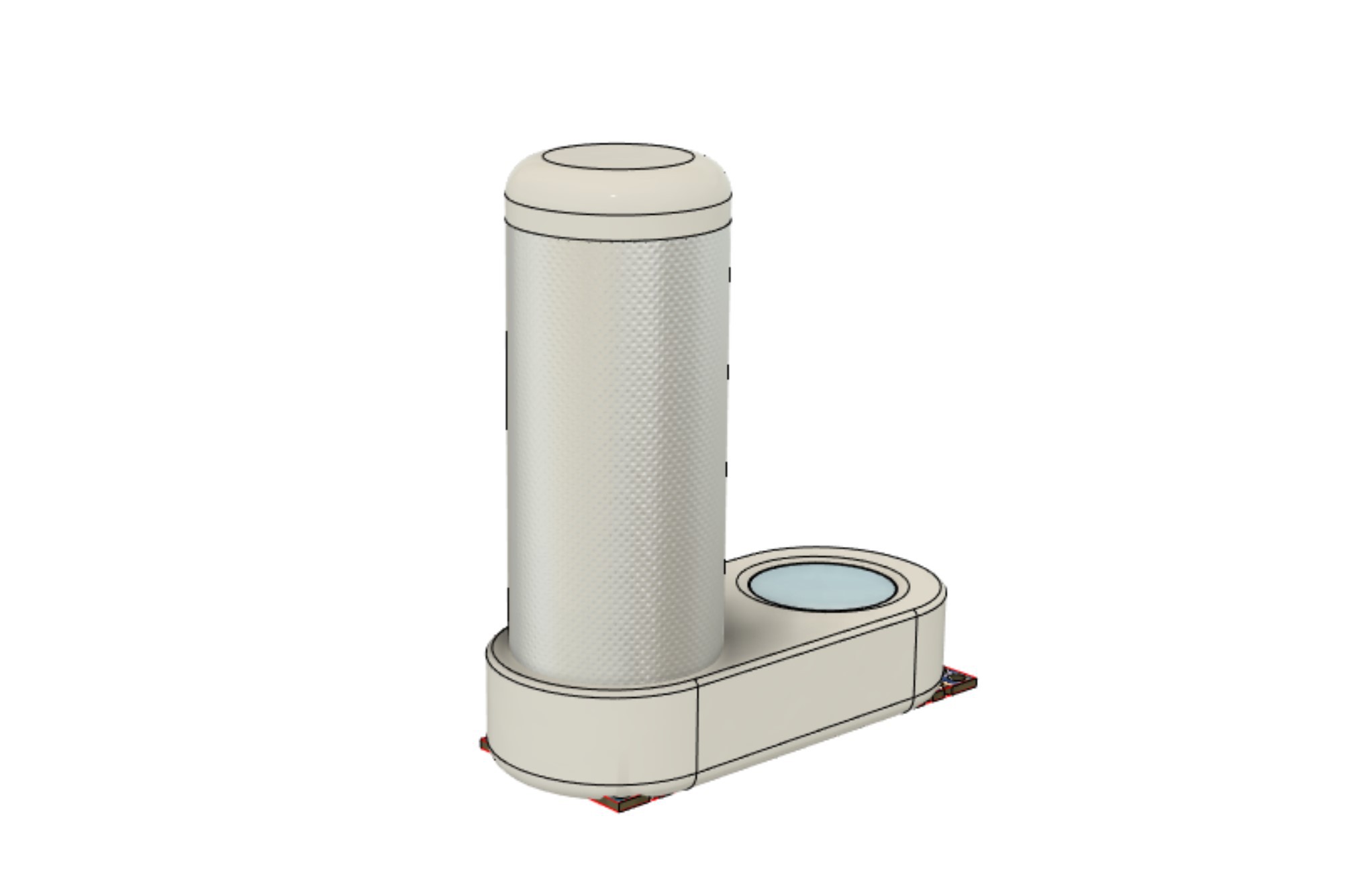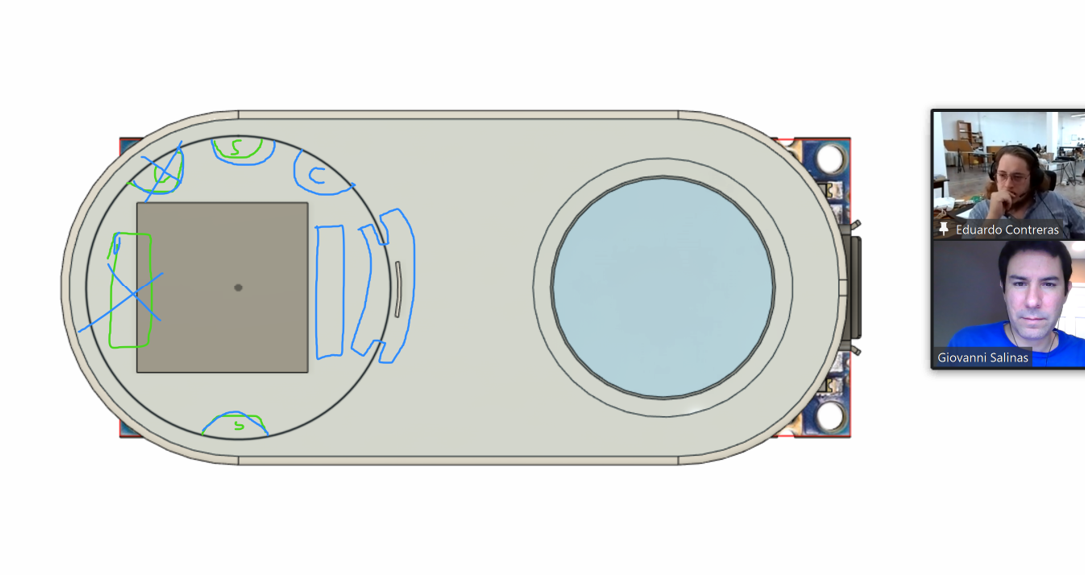-
Communication
06/17/2022 at 18:13 • 0 commentsThis was a very important milestone in the project.
Having just one sensor connected to the hub would not provide accurate readings. By the time the CO2 reaches that sensor, the concentration would be too high.
The concept revolves around having anything from two to six small, wireless sensors scattered around an area, that send signals to the main hub every few minutes (5-10). When the CO2 averages are too high, the Hub detects that and starts the fan. Bluetooth does the trick as the distances are of a few meters only.
Wero had some problems with the Bluetooth communication but he worked his magic. To the right we see the data that is being sent from the node, and to the left, the hub is receiving it. Great success!


-
Working fast
05/04/2022 at 00:43 • 0 commentsFrom the very beginning, the concept revolved around having as much air available for the CO2 sensor to do its job. The first iterations for the node had a towered design with a steel mesh covering almost 360 degrees. I liked this design, but it proved to be a bit difficult for construction. The meshes were either too rigid to bend to a cylindrical shape, or too flimsy to keep that shape.
Additionally, these units would be too fragile, and even a slight bump may damage, dent or even break them. So it was time to move to a single body shape.

PCB design was already underway so we had three main components for the nodes:
- the main board,
- an independent pcb for the CO2 sensor,
- a second independent PCB for the air quality sensor.
-
First steps
05/04/2022 at 00:33 • 0 commentsDuring our first conversations things seemed pretty straightforward. However, it is easy to be deceived and fall in the rabbit hole almost without noticing. So the premise was pretty simple:
How can a simple, old fan be enhanced and useful for the current times?
Because of COVID, many people are more conscious of the need for ventilation in closed spaces. keeping windows closed is great for energy conservation, but it does not good to the need for constant air circulation. Spaces such as offices and workshops get a lot of airborne contaminants from places that I never imagined before I read ASHRAE's papers... rugs, clothes, shoes, equipment, faucets, sinks, and of course, exhalation. The easiest answer to this challenge is: getting a brand new HVAC system, ducts and HEPA H14 air filtration systems! This is not always possible, and sometimes not even desirable. We could open windows whenever the weather allows it. So, how can we know if the air is starting to get saturated with VOC's and CO2?
There are several papers that study the correlation between CO2 saturation and higher risk of catching COVID. I used Zhe Peng and Jose L. Jimenez's work as a reference.
All this made it evident that we would not be able to rely solely on a simple VOC sensor with estimated CO2 readings. An closed office space may not be exposed to a lot of contaminants, but it could be filled with CO2 due to breathing
We went for the Sensirion sensor.
References:
- Exhaled CO2 as a COVID-19 Infection Risk Proxy for Different Indoor Environments and Activities
Zhe Peng and Jose L. Jimenez
Environmental Science & Technology Letters 2021 8 (5), 392-397
DOI: 10.1021/acs.estlett.1c00183
2022 HDP 3 - Hack it Back
Repurposing of an old fan to promote a healthier life and work environment
 Supplyframe DesignLab
Supplyframe DesignLab



